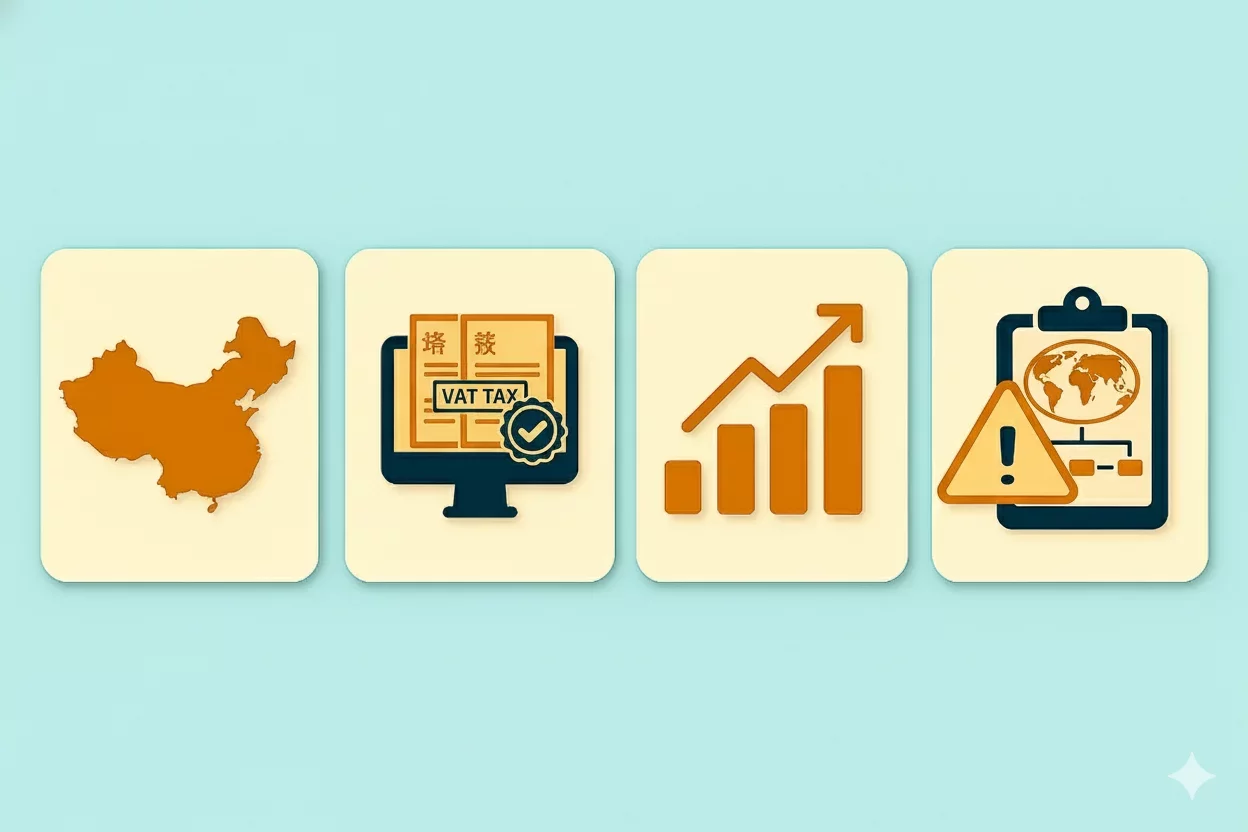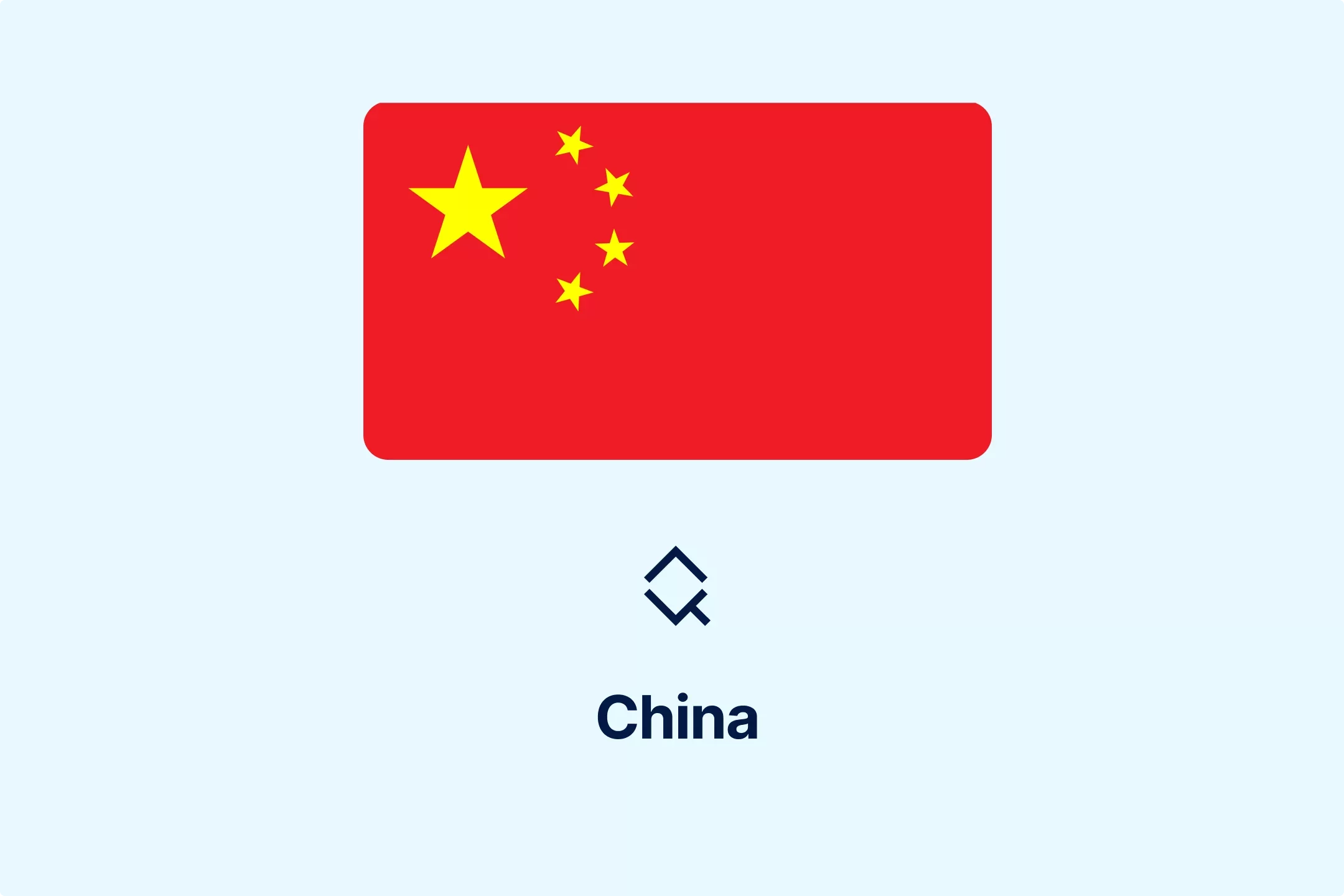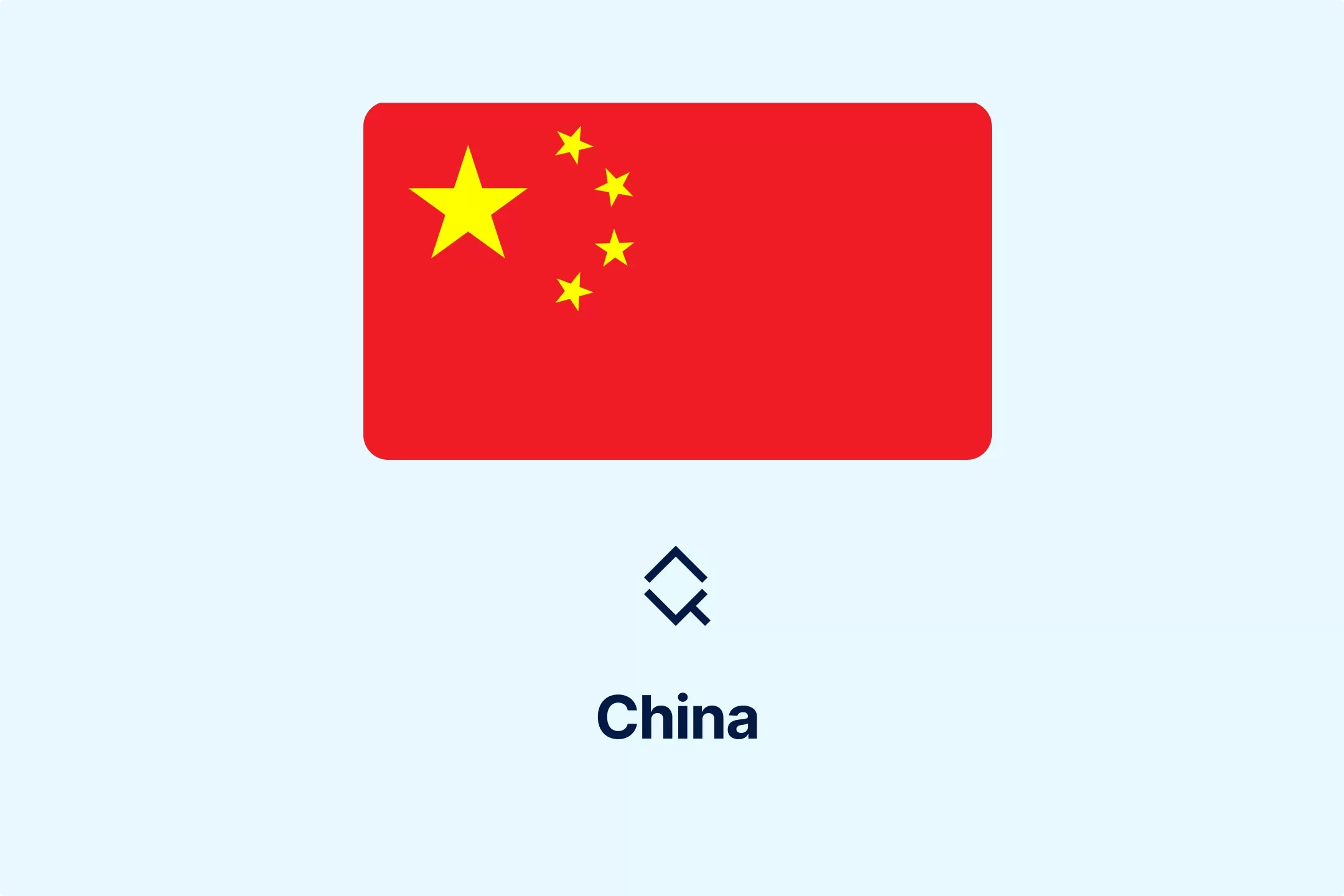China’s VAT Journey: A New Era for Tax Compliance

Summary
China's VAT system has undergone a significant transformation, moving from a dual Business Tax (BT) and VAT regime to a unified VAT system, culminating in the passing of the VAT Law on December 25, 2024, set to take effect on January 1, 2026.
The reform aims to modernize China's tax framework by broadening the tax base, reducing fraud through a technology-driven, centrally controlled architecture, and aligning with international standards, transitioning from a manufacturing-based to a consumption-based VAT system.
The new VAT Law, accompanied by detailed implementation regulations and a national rollout of e-fapiao (fully digital VAT invoices), clarifies obligations for domestic and foreign businesses, particularly regarding cross-border transactions and digital platform reporting, enhancing tax transparency and enforcement.
The 2013 OECD report, Tax Policy and Tax Reform in the People's Republic of China, concluded that China’s tax system has performed strongly over the past two decades, successfully increasing revenues relative to GDP while maintaining fiscal stability and supporting economic development. However, the report showed that a central issue in the tax system lies in the fiscal relationship between China’s central and sub-national governments.
The issue involved the relationship between the Business Tax (BT) and VAT, with the OECD emphasizing the need for further integration of the BT into the VAT system. What began as a gradual replacement of the old BT regime resulted in a decade of a technology-driven, centrally controlled VAT architecture designed to reduce fraud, broaden the tax base, and support the digital economy.
From Dual Regime to Single VAT System
Historically, China’s tax system has relied heavily on indirect taxes, including VAT, consumption taxes, and property transaction taxes, while raising comparatively less from personal and corporate income taxes. Consequently, VAT plays a crucial role in the fiscal balance between the central and sub-central governments.
The VAT was introduced in 1994, initially applying mainly to the supply of goods, while services remained subject to a BT. Since China was positioning itself as a manufacturing powerhouse, the early VAT model, which allowed businesses to recover input VAT paid on fixed assets, was fit for that purpose. However, the limitation set on the application of the VAT resulted in unrecoverable VAT costs accumulating along the supply chain, creating inefficiencies and distorting pricing and investment decisions.
Therefore, the need to reform the tax system appeared. In 2008, China introduced its first major VAT reform, allowing businesses to recover input VAT on fixed assets. This change marked not only the transition from a manufacturing-based VAT system to a consumption-based system, but also an alignment of the national tax system with international standards.
As a result of these ambitions, China launched a multi-year initiative to unify the treatment of goods and services under a single VAT system. More precisely, in 2012, a pilot Business Tax to VAT (B2V) reform was conducted in Shanghai, under which the government started integrating BT into the VAT system.
Initially, the B2V was limited to specified industries. Still, over the years, it gradually expanded across all regions and sectors, culminating in the inclusion of financial services in May 2016, which marked the completion of a nationwide shift from the dual VAT–BT regime to a fully integrated VAT system.
The establishment of the single VAT system did not mean that the tax reform process was over. After the B2V reform was completed in 2016, the Chinese government started discussing codifying VAT into a comprehensive law, a process that lasted for the next several years. The system was further adjusted in 2017, when the government simplified tax rates.
Finally, in 2019, the First Draft of the VAT Law was released for public consultation, marking the start of the formal legislative process. After five years of reviews, which included multiple revisions reflecting policy refinements, administrative feedback, and public input, the Chinese National People’s Congress (NPC) passed the VAT Law on December 25, 2024.
Building the Modern VAT System
The adoption of the VAT Laws represents a significant milestone and a solid foundation for China’s modern VAT framework. The VAT Law, which is the culmination of three decades of reform, is set to take effect on January 1, 2026. However, the VAT Law alone is not sufficient for implementation. Therefore, further updates to VAT policy and administration will be guided by the law’s core principles and implemented through the accompanying Detailed Implementation Regulations, which were submitted for public consultation in August 2025.
Some of the critical issues that must be resolved before full implementation of the VAT Law, as addressed in the VAT Implementation Regulation, include clarification of taxable scope, applicable VAT rates to export and cross-border transactions, input VAT and deduction rules, refund mechanism, and administrative procedures, notably the enhanced data exchange through the Golden Tax Phase IV system.
Nevertheless, the VAT Law maintains the three-tier tax structure: a 13% VAT rate applies to general goods sales and imports, 9% to services such as transportation, post, telecommunications, water, gas, and the publication of books, and 6% to modern and consumer services.
Simultaneously, the State Taxation Administration has led a phased national rollout of e-fapiao, primarily because the pilot program results demonstrated that e-invoicing enhances the business environment and improves administrative efficiency. These fully digital VAT invoices carry the same legal weight as traditional paper invoices and are cleared through central systems.
The State Taxation Administration announced that there will be several types of e-invoices tailored to different industries and transactions, including special VAT invoices, ordinary invoices, passenger tickets for air and railway transport, and unified invoices for motor vehicle and used car sales.
Furthermore, in June 2025, the State Council introduced a new regulation requiring both domestic and foreign digital platform operators in China to submit regular tax reports. As defined by State Council Decree 810, platforms must report quarterly tax-related information to the competent Tax Authority, covering details about operators and individual service providers, referred to in the decree as employees. The term employee typically applies to individuals who provide services such as delivery or transport using digital platforms.
Impact on Domestic and Foreign Businesses
As with any other significant tax reform, the establishment of the single VAT system, combined with the introduction of a national e-invoicing system, not only modernizes China's VAT but also reshapes compliance requirements, operational practices, and strategic planning for domestic and foreign businesses.
On one side, for domestic businesses, a unified VAT system simplifies tax administration and reduces ambiguity, particularly through the adoption of e-fapiao. In practice, this should contribute to more efficient verification of transactions, input VAT credit claims, and reduce the risk of audit disputes. On the contrary, integrating services into the VAT base and enhancing reporting obligations increases the technical burden for businesses, especially small and medium enterprises (SMEs), which must upgrade IT systems and internal processes to comply.
For foreign businesses and digital platform operators, the implications are even more burdensome. Historically, foreign companies faced limited registration options in China and were often subject to withholding arrangements or relied on domestic agents for VAT remittance. With the introduction of the codified VAT law and accompanying regulations, obligations for cross-border transactions are clarified, mechanisms for withholding agents are established, and reporting responsibilities for digital platforms are defined.
Conclusion
Overall, while VAT modernization strengthens tax transparency and enforcement, reduces the likelihood of disputes, and aligns China’s indirect tax framework with international best practices, it also requires domestic and foreign businesses to adapt to a data-driven VAT system that prioritizes real-time verification, accurate reporting, and seamless integration with central Tax Authorities.
Source: OECD - Tax Policy and Tax Reform in the People's Republic of China, KPMG, EY, PwC, VATabout - China VAT Reform 2026: Draft Implementing Rules Explained, VATabout - China Mandates New Tax Reporting for Digital Platforms, VATabout - China Rolls Out Nationwide E-Invoicing: A Step Toward Digital Tax Compliance

Featured Insights

Angola’s E-Invoicing Mandate: Phased Implementation Continues Into 2026
🕝 December 10, 2025
VAT Deduction and Business Succession: When Do Advisory Costs Serve the Company’s Interest?
🕝 December 8, 2025
Europe’s Plastic Fiscal Shift: Why Italy’s Plastic Tax Now Starts in 2027
🕝 December 3, 2025
The Decline of Low-Value Import Exemptions: Closing Gaps in Cross-Border E-Commerce
🕝 November 20, 2025More News from China
Get real-time updates and developments from around the world, keeping you informed and prepared.
-e9lcpxl5nq.webp)






